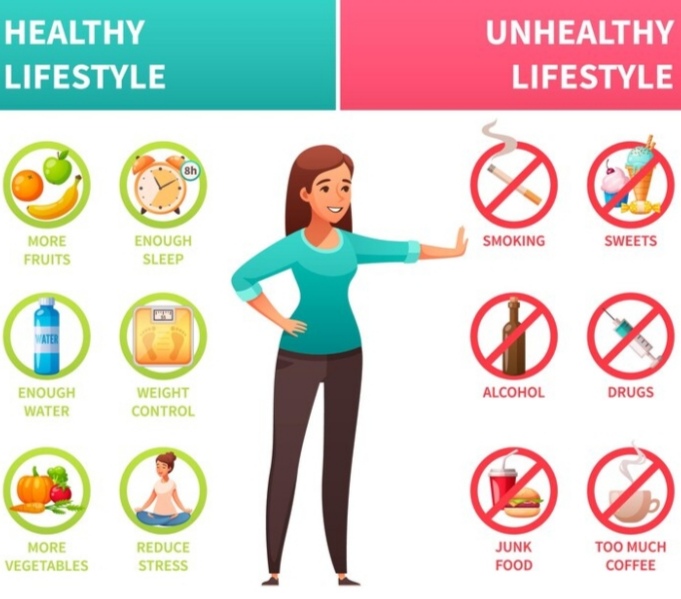What is Malnutrition? | Etiology | Primary Malnutrition | Secondary Malnutrition |
Malnutrition is a condition in which a person lacks basic nutrients or has an impaired ability to properly absorb nutrients into the body. Causes of malnutrition can include dietary deficiencies, improper food intake, disease, overexposure to soil, and inappropriate living conditions.
The consequences of malnutrition can have a major impact on health, such as frailty, increased risk of disease, impaired mental and physical development, and age-related instability. To prevent and correct malnutrition, it is essential to consume a diet rich in nutrients and use them in the right way.

🔸Severe acute malnutrition is defined as severe wasting and/or bilateral edema.
🔸Severe wasting in infants younger than 6 months is characterized by severe wasting.
🔸Whereas in infants aged 6 months, severe wasting is assessed using anthropometric measurements (weight for length/height, mid-arm circumference).

🔸Severe wasting is extreme thinness diagnosed by weight (or height) less than -3 SD according to WHO standards for child growth.
🔸In children aged 6–59 months, an arm circumference <115 mm also suggests extreme thinness: tape with colored strips is an easy way to screen children who need treatment.
🔸Bilateral edema is assessed by grasping both feet, placing one thumb on each, and applying gentle but firm pressure for 10 seconds. A depression (dent) under each thumb indicates bilateral edema.
🔸Edema must be present in both legs to be considered a sign of severe malnutrition. If the swelling is only on one leg, it may just be a sore or infected leg. The extent of edema is usually classified as follows (WHO criteria):
🔸We avoid the simple name protein-energy malnutrition because it does not reflect the complex multideficiency etiology:
🔸Marasmus means (severe wasting), kwashiorkor (characterized by edema) and marasmic kwashiorkor means (severe wasting + edema).
🔸Every year around 10.6 million children die before the age of 5 worldwide. Seven out of 10 of these deaths are caused by diarrhoea, pneumonia, measles, Malaria or Malnutrition.
🔸Malnutrition is primary when there is a lack of food, or secondary when food is available but the body cannot absorb it for one reason or another.
🔸Malnutrition is common in children between the ages of 3 months and 3 years, but may appear earlier or later.
🔸Mortality is highest among children who are malnourished. Malnutrition in infants and preschool children can have lasting effects on physical growth and development. It can also affect mental development.
Etiology:
Various causes of protein energy deficiency
(PEM) are as follows:
Basic Malnutrition:
Failure to breastfeed: Breast milk may be insufficient for the baby's needs, for example when the mother becomes pregnant or suffers from an illness.
Ignorance of weaning: Breast milk is suitable up to 4-5 months of age, when solid food is started. Most mothers do not know about weaning, because not only the timing of weaning is established, but also the type of weaning.
Poverty: Parents may not be able to afford meat, milk, eggs, or other high-calorie foods. In addition, they lack adequate housing, clean water supply and sanitation. All these factors make the child vulnerable to infection and malnutrition.

Cultural Patterns and Feeds: Cultural factors also affect nutrition. Some mothers may give the child sweets, coffee or tea instead of nutritious food. The concept of "warm food" usually leads to the removal of eggs from children's diets, similarly, bananas, citrus fruits and rice are considered "cold foods" and are banned from children's diets. In our male-dominated society, the best foods such as meat, eggs, and fruit are provided first to the adult men in the family, and the leftovers are eaten by the women and children.
Secondary Malnutrition:
🔹It is caused by infection, malabsorption, birth defects or metabolic defects. It's not for lack of food,
Infections: Acute, chronic or recurrent infections of major body systems such as the gastrointestinal tract.
respiratory tract and urinary tract.
🔹Parasitic infections such as worms, parasites
(giardia) and malaria
🔹Measles, whooping cough
🔹Primary tuberculosis
🔹Urinary tract infection

Congenital diseases:
🔹Heart disease, e.g. Tetralogy of Fallot, ventricular
Septal defect
🔹Congenital lung disease
🔹Abnormalities of the urinary tract such as obstruction
uropathy
🔹CSF flow obstruction such as hydrocephalus
Malabsorption:
🔹Giardiasis
🔹Lactose intolerance
🔹Stomach disease
🔹Intestinal tuberculosis
🔹Default state
Metabolic disorders:
🔹Diabetes mellitus
🔹Congenital disorders of metabolism
🔹Diabetes insipidus
🔹Storage diseases
🔹galactosemia
🔹Neurodegenerative disorders
Psychosocial deprivation.
Recommended Blogs


Mansab Ali


Mansab Ali


Mansab Ali



